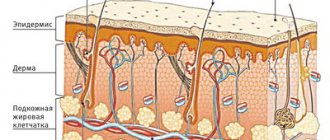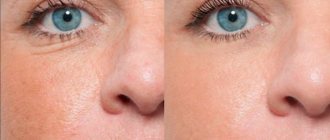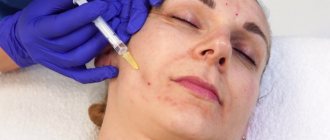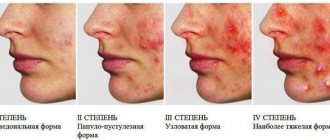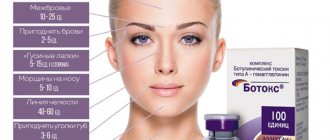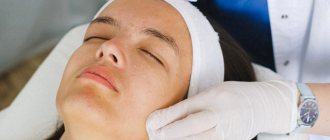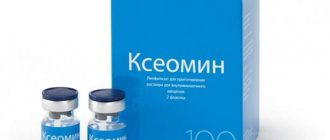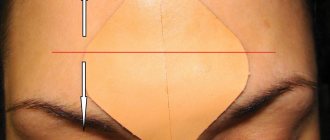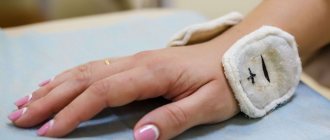What is iontophoresis in cosmetology?
The first studies of the effects of electric current on the human body were carried out back in the 18th century, but iontophoresis began to be used in medical practice only at the beginning of the 20th century.
We owe the introduction of iontophoresis in cosmetology and medicine to the famous French scientist Stéphane Leduc. His works explained how electric current affects the body and why it enhances the delivery of drugs. So, in 1935, iontophoresis began to be used in beauty salons, which could solve many aesthetic problems. Iontophoresis is a painless, effective and safe technique based on the use of the galvanization method. Low voltage current promotes the penetration of drugs into the deep layers of the epidermis, enhancing their therapeutic effect. Low voltage and current can change the permeability of cell membranes. Thanks to the effects of current, permeability, metabolic processes, blood circulation and tissue regeneration are enhanced.
When nerve endings are irritated, blood vessels dilate, pores open, and lymphatic drainage and blood flow are activated. To enhance the effect, iontophoresis is recommended to be carried out in conjunction with special preparations (they usually contain ionized elements) that penetrate deeply into the tissues, concentrate in them and improve the functioning of cells.
There is one type of iontophoresis called disincrustation. This technique is used not for rejuvenation, but for cleansing the skin and has proven itself in the treatment of acne, comedones and acne.
Skin as an organ
The skin is a superficial anatomical structure, which is a collection of epithelial and connective tissue components. This is an important organ that the body needs to protect itself, ensure metabolism, produce nutrients, regulate fluid balance and temperature. Intact skin prevents bacteria, viruses and other pathogenic microorganisms from entering the body. In addition, integumentary tissues protect internal organs from harmful chemical and physical influences.
Structural components of the organ:
- The epidermis is the superficial part of the skin, consisting of five layers of epithelium. The upper epithelium is formed by dead (keratinized) cells that perform a barrier function. The lower layers of the epidermis ensure regular cell renewal. Iontophoresis has a positive effect on this part of the organ.
- The dermis is the middle part of the skin. This structure includes blood vessels, smooth muscles, nerve fibers, hair follicles, sweat and sebaceous glands. Active metabolic processes are necessary to nourish and renew the skin. Electrophoresis improves the metabolic functions of the dermis.
- Subcutaneous tissue. These are the deep layers of skin formed by adipose tissue. The main functions of fat include thermoregulation, energy and water storage. The therapeutic effect of the current allows you to influence the fiber and facial muscles located below this section.
Due to diseases, age-related changes, climate and lack of nutrition, the skin loses its functions. The tissues produce insufficient amounts of protein necessary to maintain the strength and elasticity of the epithelium. The skin also becomes contaminated, resulting in the appearance of blackheads, comedones, acne and other pathological formations. Ordinary hygiene procedures do not always save a woman from such ailments, so the use of hardware technologies is a reasonable solution.
What drugs are used for iontophoresis?
Substances near the electrodes disintegrate into ions. There are two types of ions: anions and cations. Ions move under the influence of current: anions (-) tend to the anode, and cations (+) tend to the cathode. As a rule, “+” or “-” are written on drug labels. This marking helps you understand which pole should be used to administer the product. The injected drugs penetrate the skin approximately 1.5 centimeters, accumulate in a special “storage”, and after exposure to iontophoresis, slowly spread from the depot to nearby tissues, thereby enhancing the effect of the procedure and ensuring a prolonged effect.
What is leg hyperhidrosis
Hyperhidrosis of the legs, or medically “plantar hyperhidrosis,” is a local form of the disease in which severe sweating is observed in the area of the feet.
Increased sweating in hot weather, or wearing too warm shoes, or during physical activity is normal. If your feet are constantly sweating, this indicates the presence of foot hyperhidrosis.
This pathology is characterized by active increased sweating, itching, burning, redness and peeling of the skin on the feet. Under these conditions, a bacterial or fungal infection may occur and a very unpleasant odor may appear. In addition, increased sweating of the feet almost always leads to the active development of dermatological and fungal diseases of the skin of the feet and nails. Therefore, excessive sweating in the foot area can cause significant physical discomfort and affect quality of life.
Both adolescents and adults experience the disease.
Causes of excessive sweating of feet
The most common causes of foot hyperhidrosis include:
- heredity;
- disorders of the nervous system, psychogenic conditions;
- strong emotional experiences, incl. stress;
- disruption of the hormonal system;
- some infectious diseases;
- excess weight;
- taking certain medications;
- bad habits (alcohol and smoking)/
The severity of sweating in the foot area is divided into three forms:
- light – sweating is not very active;
- medium – when the process is more pronounced and you have to either change socks frequently, or use additional means to reduce sweating and eliminate odor;
- severe - when the feet are constantly wet.
Benefits of using iontophoresis
Iontophoresis allows you to inject the drug of the required concentration directly into the area where the problem is found, bypassing healthy areas.
The galvanic current used to administer drugs minimizes the occurrence of adverse reactions, since the substances are delivered to the body in their pure form.
Current reduces skin sensitivity, improves local immunity and the general condition of the epidermis.
With the help of iontophoresis, a prolonged effect can be achieved by creating a special “storage” in the skin, from which the active components are gradually consumed.
Iontophoresis does not cause pain and does not provoke injuries. During the procedure, you may feel a slight tingling sensation, which goes away fairly quickly.
Thanks to iontophoresis, there is a visible therapeutic effect that lasts for quite a long time.
A wide range of galvanization devices allows you to carry out iontophoresis at home.
Main differences between the two procedures
Let us consider in more detail the main differences between these procedures:
- Iontophoresis uses galvanic currents, and phonophoresis uses ultrasound.
- An iontophoresis session lasts about 20 minutes, but the active substances act faster. The phonophoresis procedure lasts approximately 10 minutes, but provides longer absorption of drugs.
- Phonophoresis is a painless procedure that is performed using a special probe. Iontophoresis requires the connection of electrodes and may cause unpleasant tingling sensations.
- There is a risk of burns when performing iontophoresis. Phonophoresis is a relatively safe technique.
Indications and contraindications for the procedure
- Acne, acne, comedones;
- Wrinkles (deep and superficial), jowls, creases, crow's feet, nasolabial folds;
- Swelling, dark circles under the eyes;
- Excessive dryness or oiliness of the skin;
- Pigmentation;
- Skin laxity;
- “Floating” oval of the face;
- Dull, uneven skin tone;
- Peeling of the skin;
- Decreased skin tone;
- Post-acne, scars, scars;
- Nutrient deficiency in cells.
Indications:
- Oncological diseases;
- Injuries and skin damage;
- Purulent processes;
- Increased body temperature;
- Dermatological diseases;
- Diseases of the cardiovascular system;
- Pregnancy and lactation;
- Presence of a pacemaker;
- Individual intolerance to electric current;
- Thyroid diseases;
- Reinforcement with gold or platinum threads;
- Dental cysts;
- Hypertension;
- Exacerbation of chronic diseases;
- Psychological and nervous disorders;
Contraindications:
As a result of exposure to the galvanization apparatus, significant changes occur in the skin:
- The firmness and elasticity of the integument increases;
- The number of rashes decreases;
- Evens out skin tone and improves complexion;
- The activity of the sebaceous glands is normalized;
- Dryness or excessive oiliness of the skin disappears;
- Local immunity improves;
- Removal of impurities and toxins occurs;
- The severity of edema decreases;
- Wrinkles are smoothed out, turgor improves;
When using special products, iontophoresis copes well with rosacea.
How does the procedure work?
The iontophoresis apparatus is equipped with two types of electrodes. Depending on the condition of the skin and the desired result, a positively or negatively charged electrode is selected, which will be active. The instrument is equipped with a moisturizing hydrophilic pad that protects the skin from injury.
The whole procedure includes 3 stages:
- Skin cleansing with enzyme peeling, which contains AHA acids.
- A product corresponding to the charge of the active electrode is applied to the face. The cosmetologist moves the device over certain areas of the skin.
- Treatment of the face with a moisturizing toner.
Price for treatment of leg hyperhidrosis in a clinic in Moscow
| Impact area | Price per procedure including current promotion |
| Introduction of Botox in the foot area 70 units | 20,500 rub. |
| Introduction "Dysport" in the foot area 300 units | 24,000 rub. |
Contraindications for therapy
Contraindications to botulinum therapy are pregnancy or lactation, infectious diseases, inflammatory processes, blood diseases, intolerance to the drug.
When is cosmetic inlay recommended?
Today, iontophoresis is used not only to eliminate excessive sweating.
The scope of its beneficial action is much wider. Galvanization is relevant as:
- method of rejuvenation (of the hardware methods, this is the most gentle method, it requires a larger number of sessions, but eliminates any trauma);
- a means of eliminating wrinkles (iontophoresis is effective on young skin - up to 40 years);
- a method of effective cleaning (iontophoresis helps open pores and reduce the activity of the sebaceous glands);
- method for eliminating comedones, pimples, acne, post-acne;
- anti-edematous therapy;
- anti-cellulite program;
- a method of combating skin pigmentation (iontophoresis works to whiten its surface);
- a method of moisturizing pathologically or physiologically dry skin.
Mesotherapy without injections
The introduction of substances directly under the skin, to a sufficient depth, is now, one might say, at the peak of popularity. Salons actively use mesotherapy - a method of microinjections, and iontophoresis, comparable in effectiveness, but incomparably more gentle and painless.
Sometimes, under the influence of fashion, the introduction of substances using current is called ionomesotherapy. And, of course, the ionized form of the substance is much more effective than just a solution.
Cosmetologists know: under the influence of iontophoresis, even the most ungrateful skin willingly accepts what it is nourished with and reacts accordingly: wrinkles are smoothed out, age spots “fade”, scars and cicatrices disappear.
Apparatus for cosmetic iontophoresis
Iontophoresis is actively used in cosmetology as an independent procedure or in complex programs. Cosmetologists confirm that this is one of the most effective ways to solve many aesthetic problems. The essence of the technique is the simultaneous use of medicinal solutions and exposure of the skin to galvanic currents.
This tandem ensures increased membrane permeability and deep penetration of nutritional components. When choosing a device for cosmetic iontophoresis, it is necessary to take into account some indicators.
For example:
- device performance;
- functional;
- power range;
- comfort and ease of use;
- availability of certificates and reputation of the manufacturer.
As a rule, devices for aesthetic galvanization have a current intensity range of up to 5 mA. No less important is the equipment, which, in addition to the current-generating device, includes a set of electrodes. For ease of use in hard-to-reach areas, they can have a spherical, cone-shaped, or oval shape.
The market for devices for performing iontophoresis in salons or at home is constantly being updated with new products with extensive functionality in different price categories. You can buy equipment of both imported and domestic production.
Before purchasing a unit, it is important to study the manufacturer’s reputation, reviews, and also consult a qualified physiotherapist or cosmetologist about effectiveness and safety.
